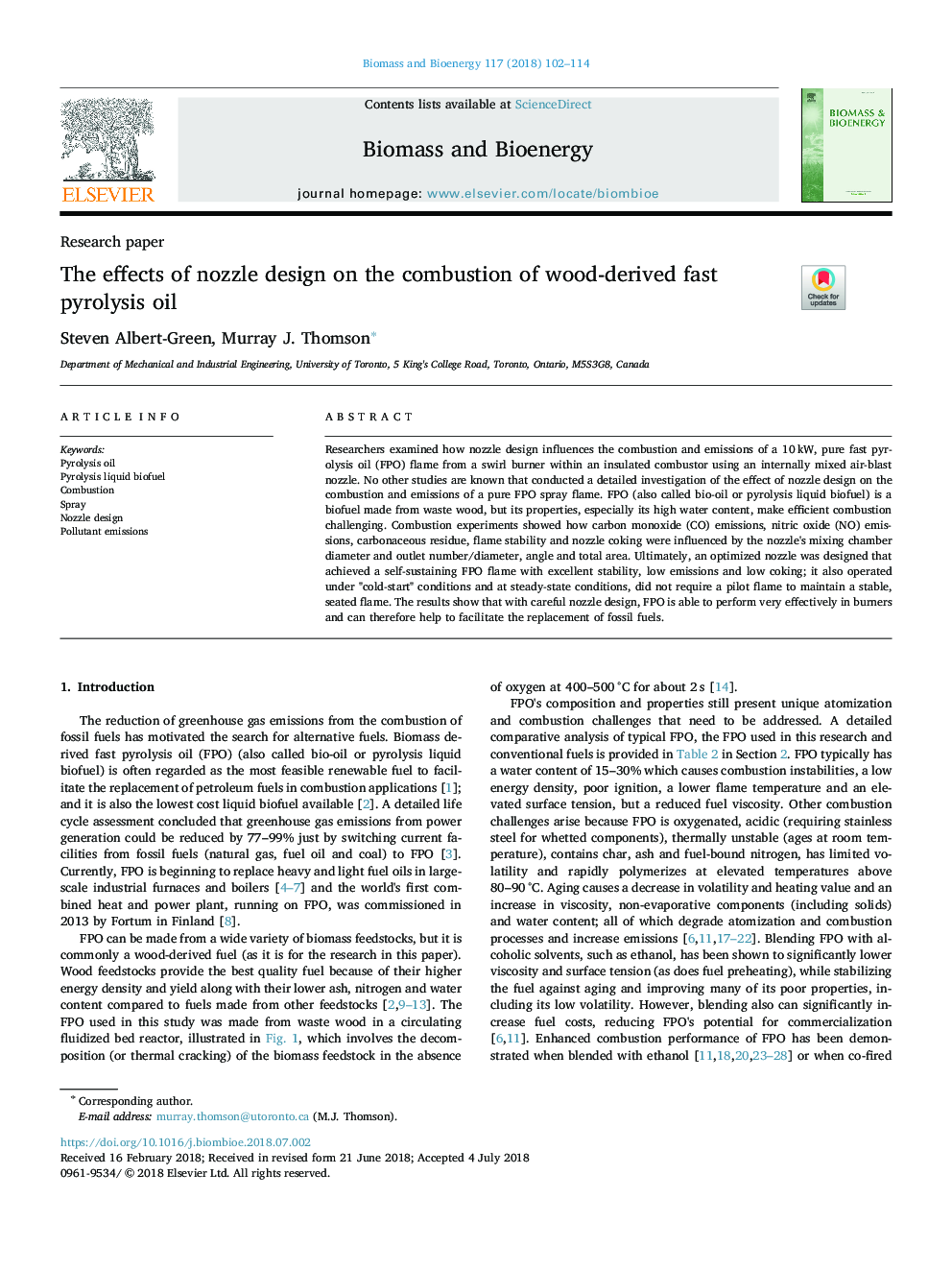| Article ID | Journal | Published Year | Pages | File Type |
|---|---|---|---|---|
| 7062801 | Biomass and Bioenergy | 2018 | 13 Pages |
Abstract
Researchers examined how nozzle design influences the combustion and emissions of a 10â¯kW, pure fast pyrolysis oil (FPO) flame from a swirl burner within an insulated combustor using an internally mixed air-blast nozzle. No other studies are known that conducted a detailed investigation of the effect of nozzle design on the combustion and emissions of a pure FPO spray flame. FPO (also called bio-oil or pyrolysis liquid biofuel) is a biofuel made from waste wood, but its properties, especially its high water content, make efficient combustion challenging. Combustion experiments showed how carbon monoxide (CO) emissions, nitric oxide (NO) emissions, carbonaceous residue, flame stability and nozzle coking were influenced by the nozzle's mixing chamber diameter and outlet number/diameter, angle and total area. Ultimately, an optimized nozzle was designed that achieved a self-sustaining FPO flame with excellent stability, low emissions and low coking; it also operated under "cold-start" conditions and at steady-state conditions, did not require a pilot flame to maintain a stable, seated flame. The results show that with careful nozzle design, FPO is able to perform very effectively in burners and can therefore help to facilitate the replacement of fossil fuels.
Related Topics
Physical Sciences and Engineering
Chemical Engineering
Process Chemistry and Technology
Authors
Steven Albert-Green, Murray J. Thomson,
